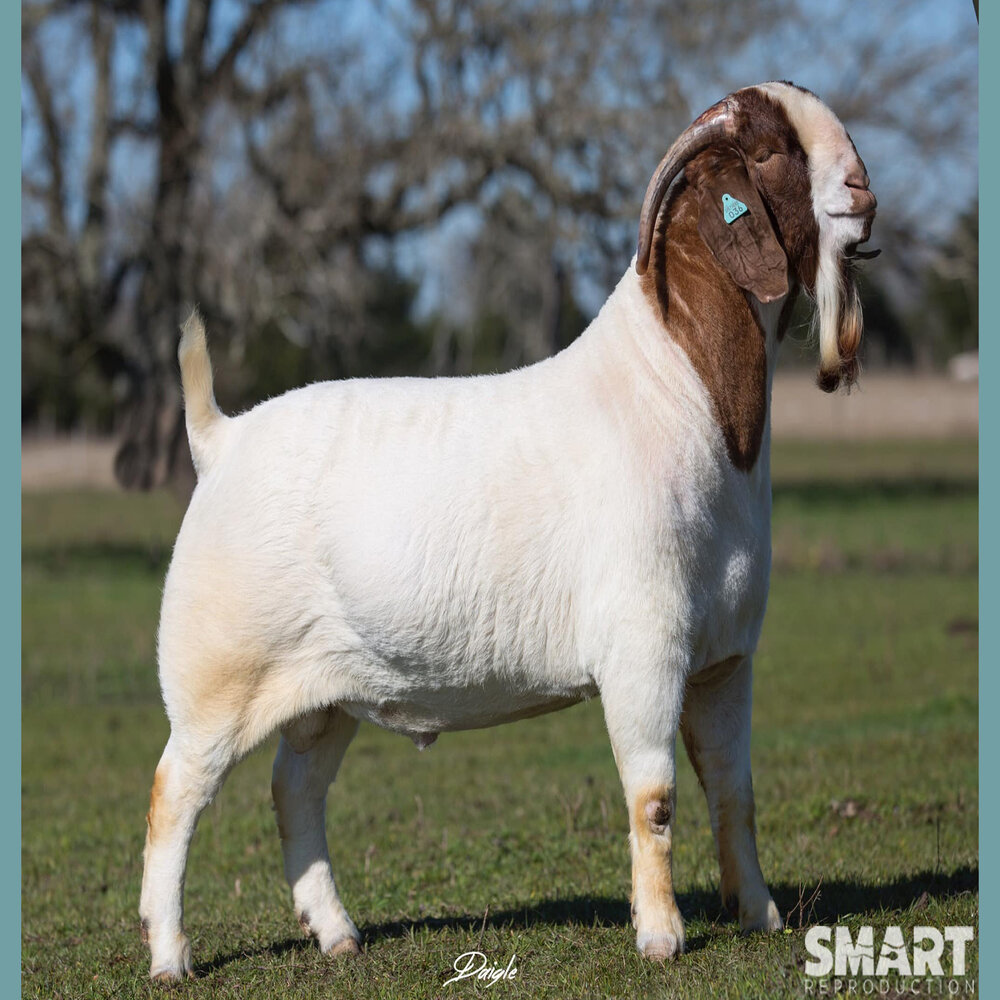The Boer goat, a breed that originated in South Africa in the early 1900s, has gained prominence for its robust qualities and meat-producing capabilities. Introduced to the United States in 1993, the American Boer Goat Association (ABGA) was founded the same year to establish standards for this exceptional breed. In this blog post, we’ll explore the physical characteristics, standards, and essential traits that define the Boer goat.

https://smartrepro.com/catalog-category/meat-goats/
Body Structure and Standards
Boer goats are known for their distinctive three-dimensional body structure, characterized by length in the loin, depth of body, and width over the top line and from hooks to pins. Does, with a wedge-shaped form, showcase a deeper rear flank than the heart girth, indicating their capacity to carry multiple kids while maintaining proper rumen function. The top line should be level throughout, with well-sprung ribs and a well-muscled, wide, and long loin.
The head of a Boer goat is a focal point, with brown eyes contributing to a soft and gentle look. A prominent, strong head is preferred, with a roman nose, wide nostrils, and well-formed mouth. Does should exude femininity, while bucks should possess a strong masculine head. Horns, dark and round, should be well-spaced and exhibit a gradual backward curve before turning outward symmetrically.
Teeth and Jaw Structure
Boer goats are judged based on their dental structure, with the front of the upper dental pad touching all incisors until 24 months of age. A correct bite and jaw structure are preferred, with no more than 8 incisors, ensuring proper eruption in sequential order. Faults include dished or concave foreheads, bulging or wild eyes, and teeth-related issues.
Neck and Forequarters
The neck, of moderate length, should smoothly blend into the shoulders, with well-muscled and proportional forequarters. Bucks should display a heavily muscled neck indicative of masculinity. Withers should be broad, well-rounded, and not sharp, while shoulders should be fleshly and proportional.
Hindquarters
Boer goats should have broad and long rumps with a gentle slope, clearly defining adequate width for kidding. Bucks and does alike should exhibit muscling through the rear legs, inner and outer thighs, extending beyond the stifle towards the hock. Faults include a too-steep rump, lack of muscling, or shortness through the hip or rump.
Feet and Legs
Strong, well-placed legs are crucial for Boer goats, ensuring soundness over a long productive life. The front legs should form a straight line from the point of the shoulder to the toe of the foot, while the rear leg should form an imaginary line from the hipbone to the dewclaw when viewed from the side or rear. Hooves should be well-formed, as dark as possible, and point directly forward.
Skin and Coverings
Boer goats should have loose, supple skin with short, glossy hair. A pleated appearance on the front of the neck is desirable in mature bucks. Hair length and texture are considered, with a limited amount of winter down acceptable during colder months. Pigmentation requirements exist for hairless areas under the tail, ensuring a healthy coat.
Bucks and Does Specifics
Bucks should have well-formed testicles, scrotum characteristics, and deep twists indicating muscling. Does should possess a well-formed udder with good attachment, supporting unassisted nursing. Teat structures are critical, with ideal structures having one or two well-separated teats per half of the udder. Acceptable structures may include non-functional teats or split teats with specific criteria.
Conclusion
The Boer goat, with its distinctive characteristics and adherence to standards, stands as a testament to the careful breeding and selection by Dutch farmers in South Africa. As these goats continue to play a crucial role in the agricultural landscape, understanding and appreciating their unique qualities contribute to successful breeding and livestock management.

